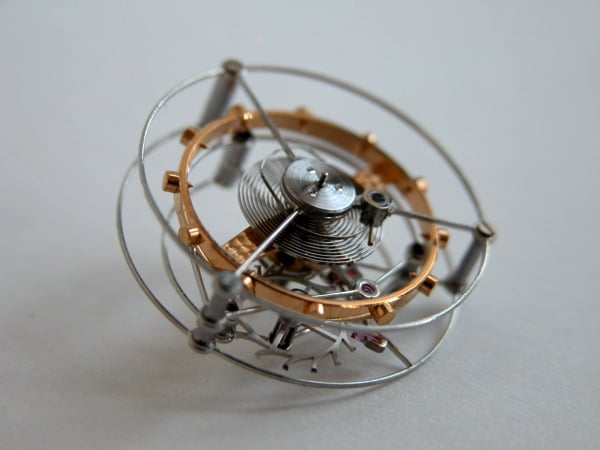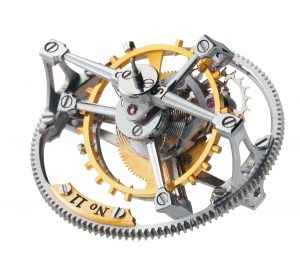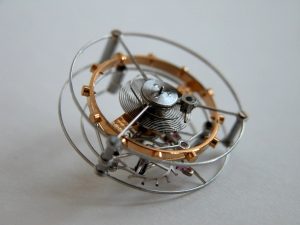There are few premium complications which cost more than the tourbillon. Swiss wristwatches featuring a tourbillon can sell for upwards of £100,000 and many cost over a million! For that kind of money you would expect that it actually carries out an important function.
But you may be very wrong!
It’s questionable whether there is any point in having a tourbillon in a wristwatch at all. Many would say that the tourbillon is a complication which adds nothing of value to any timepiece. Today we’ll answer the important question: “Is the tourbillon useless in a wristwatch?”
What Does a Tourbillon do?
The tourbillon was certainly created with the idea of improving the performance of the wristwatches produced by Breguet. The purpose of the tourbillon is to reduce the rate variation between the flat positions of the watch and the vertical positions as much as possible. Breguet found that the biggest cause of this rate variation is the effect of gravity on the balance and balance spring. His aim would be to resolve this issue to improve the performance of his watches.
The tourbillon complication places the balance and spring inside a rotating cage which turns in the same plane as the dial. In theory, this should keep better time because it will provide the same average rate for all of the vertical positions. It seems fairly straightforward that this should be the case, however, over time people have suggested that it does not help at all. In fact, many believe that the tourbillon is actually more of a hindrance than a help. As far as they are concerned the evidence suggests that the tourbillon is useless in a wristwatch.
Is the Tourbillon Useless in a Wristwatch?
While the theory sounds as though the tourbillon would obviously improve any watch it was used in, there are compelling arguments against this. Some people suggest that the tourbillon is, in itself, a flawed concept while others state that the tourbillon is good in a pocket watch – but not in a wristwatch!
The arguments against the tourbillon are based around the problems that the tourbillon brings to the table. While the tourbillon provides a single average rate across the vertical positions, it also requires a more powerful mainspring to operate any watch it is installed in. The reason you need a more powerful mainspring is because you need to move everything inside the device, including the tourbillon itself. The mass of the cage itself causes a lot of stress on the device and over time this will cause excess wear and tear. Incredibly precise engineering has been required in order to minimise this excess wear and tear when producing a tourbillon watch.
The specific arguments surrounding the use of a tourbillon in a wristwatch revolve around space. A pocket watch has a lot of space for the tourbillon, but a 30mm wristwatch? Not so much! This has been attempted in the past, as a demonstration of incredible watchmaking. But did these demonstrations produce high quality precise watches?
Probably not – and that is the biggest problem!
The manufacturing processes used in watchmaking today ensure that there is no real need for a tourbillon to be used. All manufacturers now use monometiallic balances which do not move once they are in position – and thus, the problem which the tourbillon was designed to fix is no longer present. Many would suggest that this issue along makes the tourbillon useless in modern wristwatches.
When you take into account the wear and tear that a tourbillon causes, it is hard to argue against this argument. However, luxury watches are not all about the precision of the timekeeping but also the artistry of wristwatch design and manufacturing. In this sense, the high desirability of wristwatches featuring a tourbillon makes a lot more sense. It may not improve the functionality of the watch, but it makes any watch stand out and provides added intrigue into any luxury timepiece.
So, is the tourbillon useless in a wristwatch? In terms of functionality, absolutely – if you want a precise watch then there are many cost-effective options. Despite this, tourbillon watches have been produced by companies as diverse as Seiko, Patek Philippe and Zenith. This is because a the artistry and incredible watchmaking technique required to make the tourbillon makes luxury timepieces stand out against the competition!
Images: Greubel Forsey







